Incredible vintage 1982 Mercedes-Benz SL racer heads to auction
Racing cars with real racing pedigree frequently bring significant sums of money when they change hands. The car in the images below is a 1982 Mercedes-Benz SL Trans Am racing car purposely built to tear up the track. The car was raced by the DeAtley Motorsports/Michelob race team in its day. The car is hitting the auction with Mecum Auctions in Kissimmee, and the auction ends on the 16th.
Drivetrain Specifications
The vehicle was previously owned by Neat DeAtley, who owned a Mercedes-Benz dealership in Idaho. In its era, the car was raced by Loren St. Lawrence. It was built for the 1982 racing season and was notable for being the first Mercedes-Benz racing car to take to the track since 1955 in a professional series.
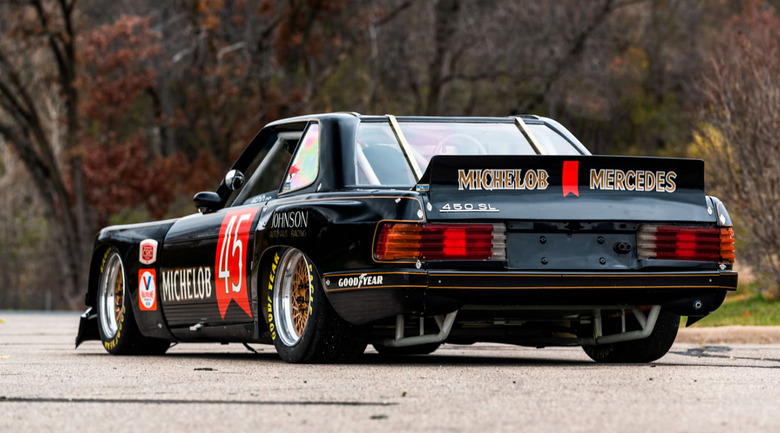
While the car came from the factory with a 5.0-liter V-8 engine under the hood, it was modified to displace 4.5 liters to meet Trans Am specifications. The engine is topped with a pair of Holley carburetors to dump fuel into the cylinders and has tube headers. The transmission is a five-speed manual.
Body & Safety
While the car looks very similar to a factory Mercedes-Benz SL from 1982, it wears a fiberglass wide-body and is built on a tube chassis. Like most racing cars, heavy emphasis was placed on aerodynamics, and the car features ground effects to help it stick to the racing track, including front and rear spoilers.
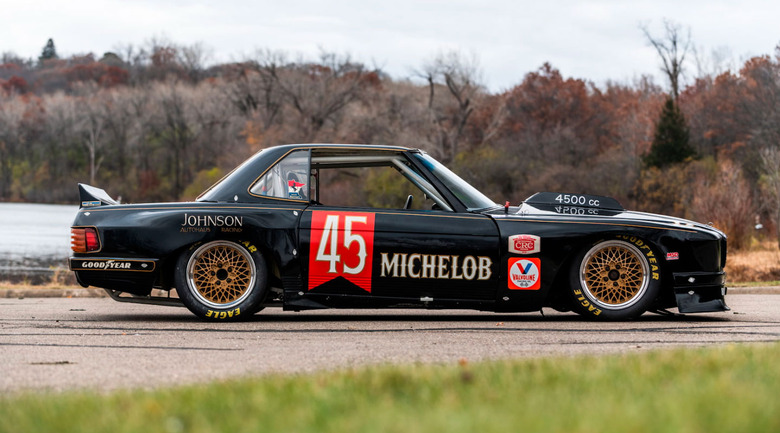
The car rolls on beautiful modular BBS wheels that are shod with Goodyear Eagle racing tires. The car is fitted with a custom full roll cage to keep the driver safe, and it has four-wheel disc brakes. Disc brakes all the way around are common on even the cheapest cars today, but in the early 80s, four-wheel discs weren't that common.
If you take a close look at the fiberglass wide-body, you can tell that the graphics on the car were hand-painted and lettered. As good as the car looks, it reportedly has the original paint and lettering on the body. Considering contact is frequently made in automotive racing, and Cars are often crashed, for this racing vehicle to have survived with its original paint and graphics since 1982 is impressive.
Interior & Other Bits
Inside, the Mercedes-Benz SL has been gutted and is nothing like the luxurious, sporty car you could've bought from the dealership in 1982. It has only required racing instruments on what appears to be a fiberglass dashboard. It has aluminum interior panels to save weight and features a racing seat and harness.
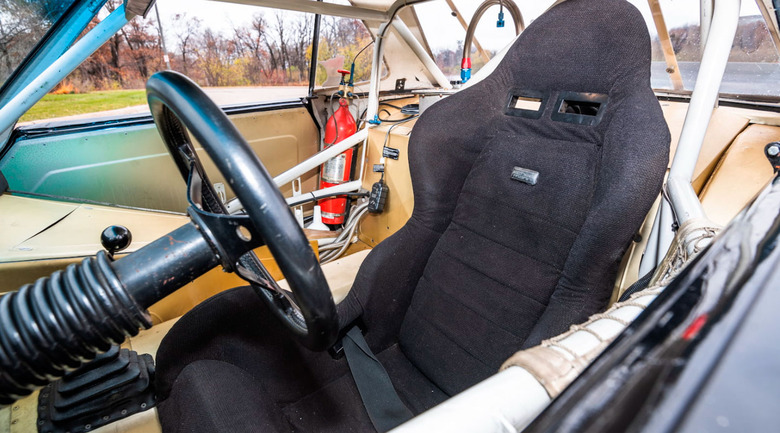
The sale does include the crew chief logbook outlining the car's exploits on the track. It also ships with a spare cast-iron block, aluminum heads, and extra body panels and fenders. The buyer also gets an additional rear end, camshaft molds, pistons and rods, and springs. Someone so inclined could take this iconic piece of racing history and run it in historical events around the country.
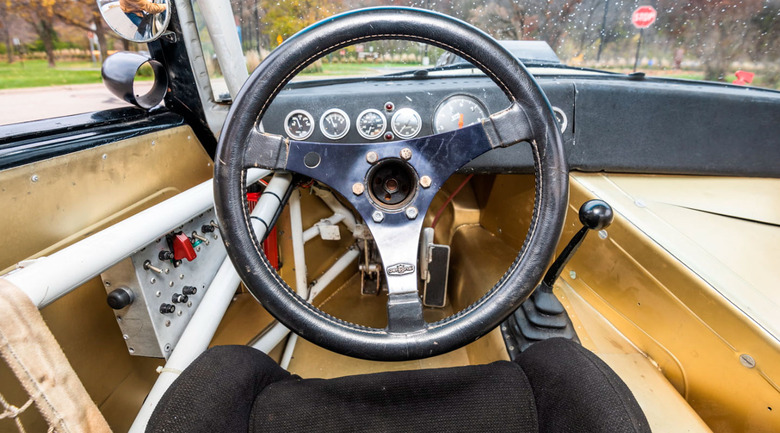
The seller recently had the vehicle serviced by a professional facility and points out that the car will be sold with a bill of sale and not a title. A bill of sale is common for racing vehicles as they were typically seen as parts and not entire vehicles.
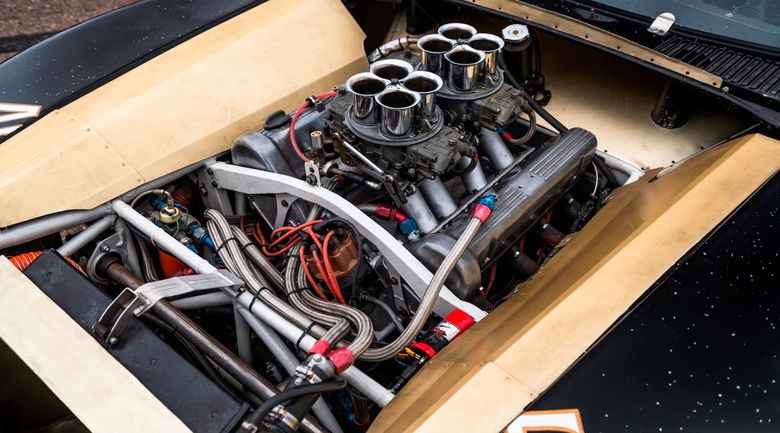
It's interesting to note that while it looks very much like a stock Mercedes, the only components in this racing car that are Mercedes parts are the engine block, cylinder heads, duplex camshaft chain drive, and taillights. Everything else is custom-made racing hardware. Mecum Auctions estimates that the car will sell for between $450,000 and $475,000. The same person has owned the car for the last three decades.
Other Mercedes News
We have talked about another exciting and thoroughly modern Mercedes-Benz car this week. At CES 2022, Mercedes unveiled its new electric vehicle called the VISION EQXX concept. It's a very wild-looking car with body lines that remind a bit of the Porsche Taycan. One of the main claims that Mercedes makes about the concept is that it will drive over 620 miles on a single charge.
That is an extremely long driving range. Today, most electric vehicles struggle to achieve 300 miles of driving range per charge. Mercedes claims that the electric vehicle would consume under 10 kWh per 100 kilometers. To squeeze every mile possible from the battery pack, the car was made with a big emphasis on aerodynamics.
The automaker claims the vehicle has an electric drivetrain that is 95 percent efficient. That means that 95 percent power in the battery pack is used to propel the car. Mercedes claims that only 30 percent of the energy produced drives the vehicle in a traditional combustion-powered vehicle.
